In Transit/En Route is part of Timelines, the trail at Glen Villa that explores ideas about time, memory and our relationship to the land. Dating back to 2009, it was one of the first sections of Timelines I built and was an inspiration for all that followed.
Over the intervening years, In Transit/En Route has undergone many changes, including several iterations of the signs that lead from an old field into the woods. First the signs stood on wooden posts that held red glass squares with circular openings.

I based that design on the Chinese concept of the universe, where earth is thought of as a square and heaven as a circle. But because this first version reversed the symbolism, with the circle inside the square instead of the other way around, it didn’t satisfy me. So in the second version of the sign, the square central openings were inside a red circle.
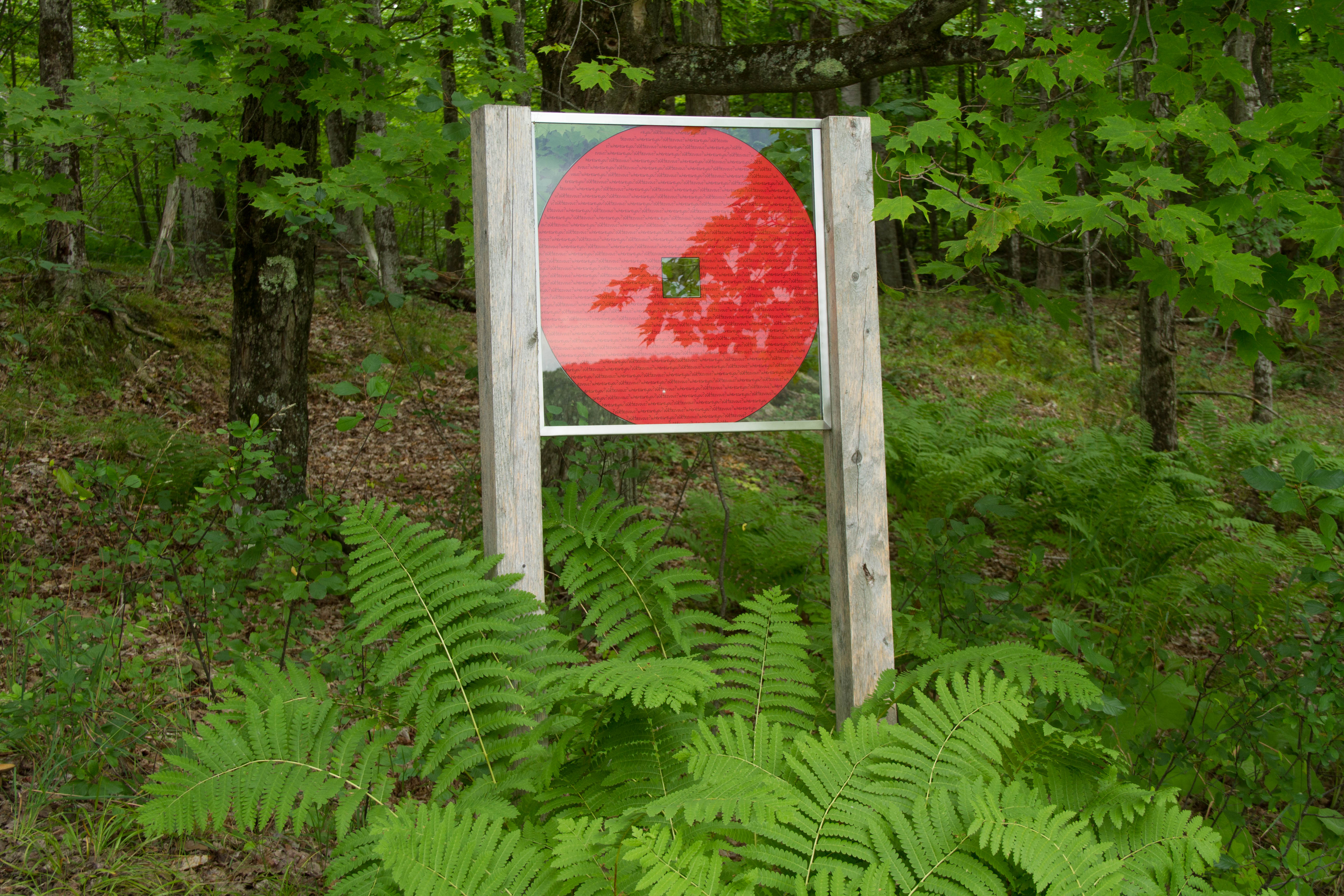
In this second version, the square openings also became larger as you walked along the path, suggesting that the farther into the woods you went, the more you became aware of, and connected to, your surroundings.
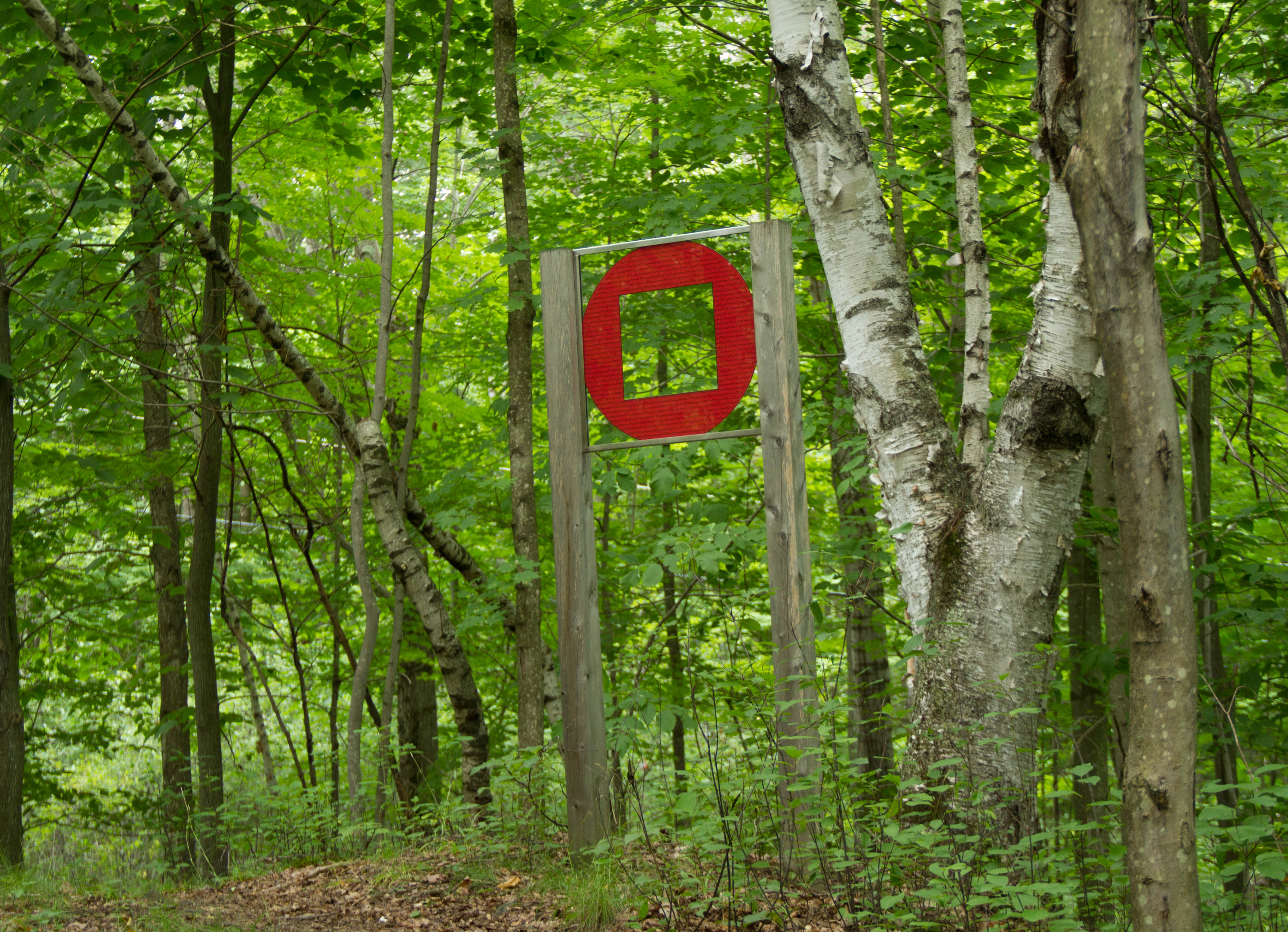
Over time, the heavy posts began to bother me. My friend Mary Martha Guy suggested suspending the signs and immediately the idea felt right. Now the signs hang from almost invisible cables, moving slightly in response to a breeze, moving more in higher winds.
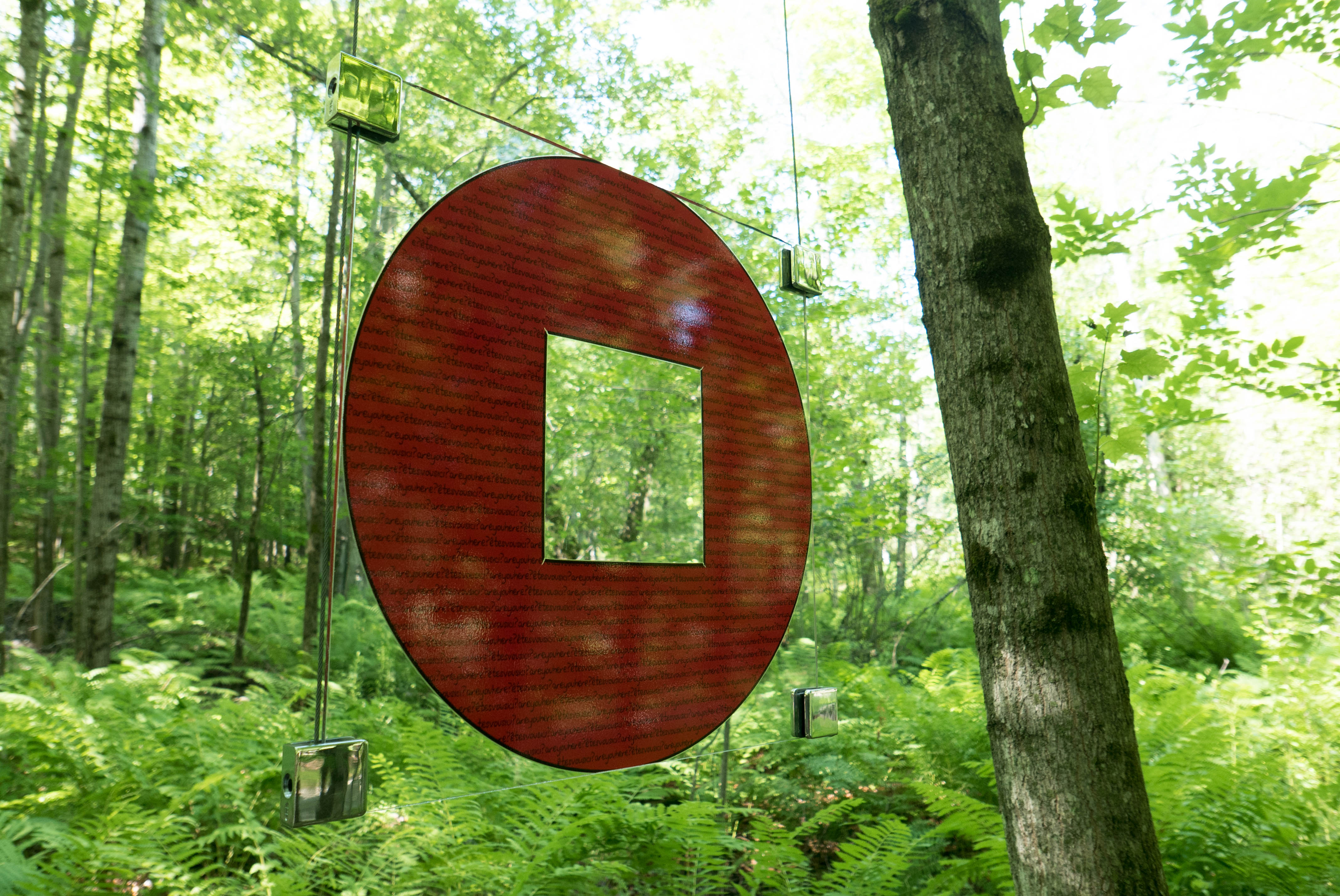
The signs led to a clearing in the woods where black plastic tubing outlined a circle. A tall dead pine tree was near the middle of the clearing and its shadow fell onto numbered posts painted with red bands to indicate the hour.
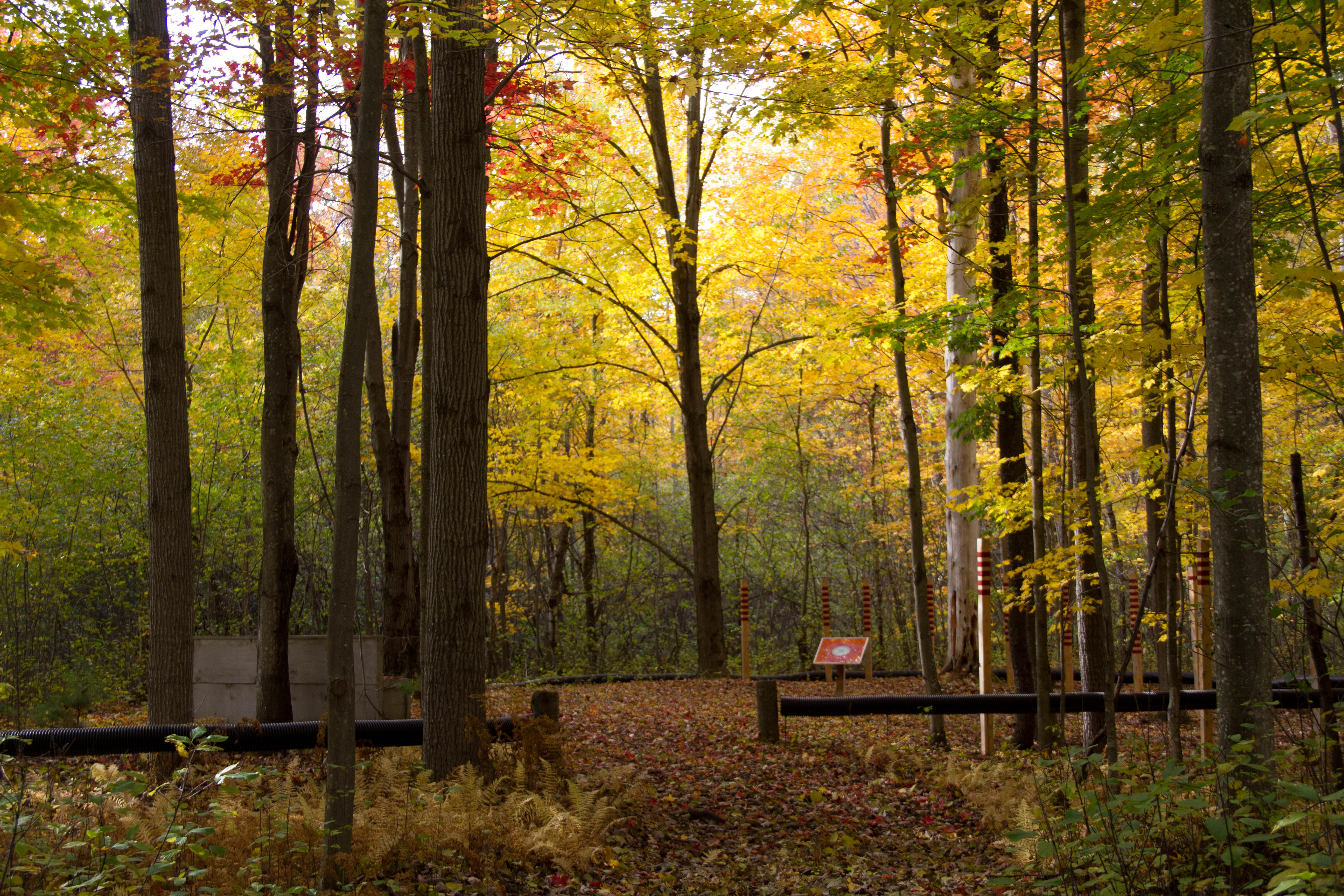
A bench at one side of the clearing gave people a place to sit. Cut into the seat to help people understand what they were seeing were the words In Transit / En Route.

As the words on the bench began to fade, they became harder and harder to read. And without being able to read them, the bench and the clearing ringed with posts became harder to understand. To make my intentions clearer, I added a tree trunk that leaned over the trail as if a tree had fallen accidentally, and on its trunk I added a name: the Sundial.
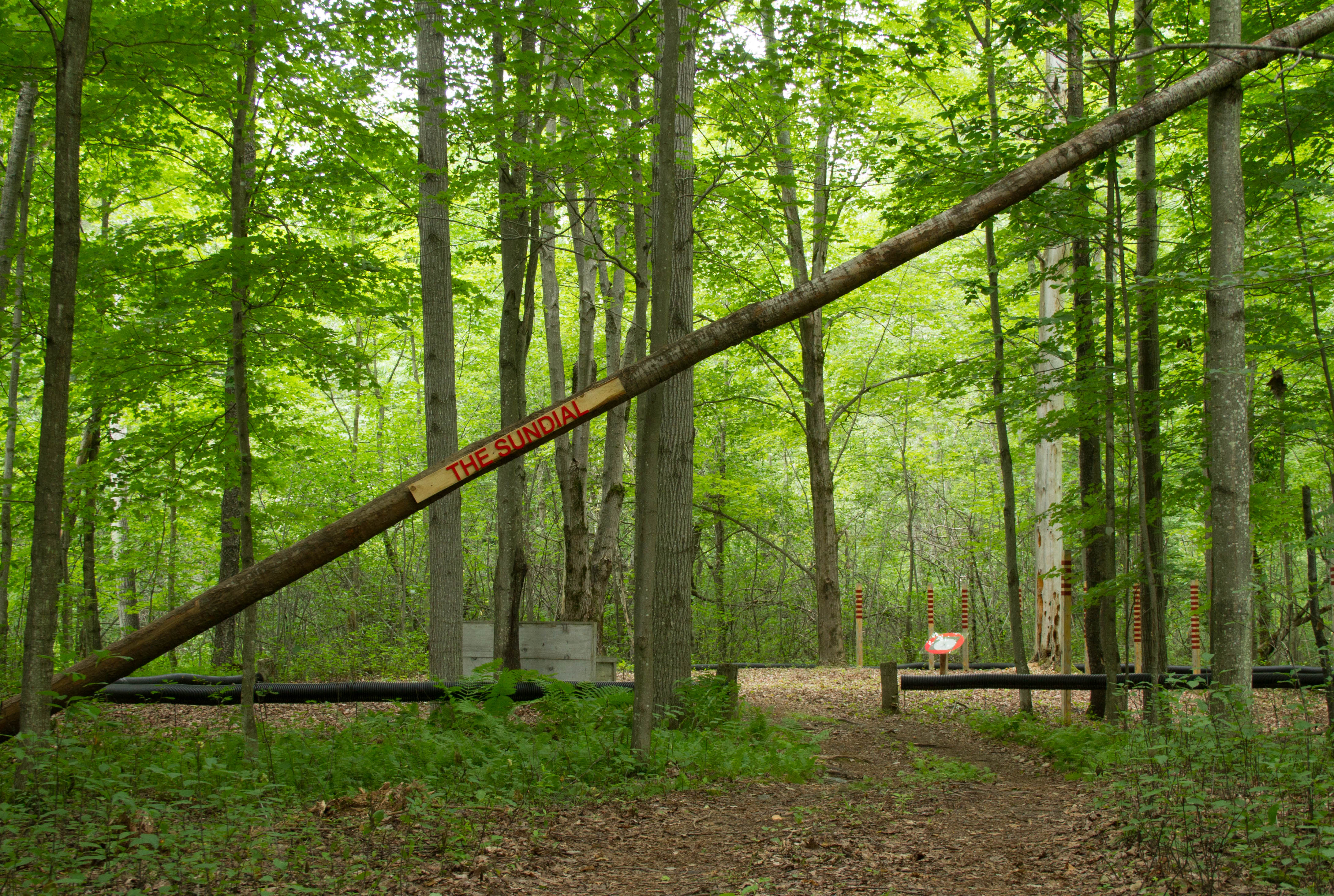
Nothing in nature stands still. Woodpeckers began to attack the rotting pine, eventually weakening it enough so that it crashed to the ground. Although the falling tree knocked the plastic tubing out of whack, it didn’t hit any of the numbered posts or the sign that was in the centre of the clearing. This sign contained a single word in French and English: Now/Maintenant.
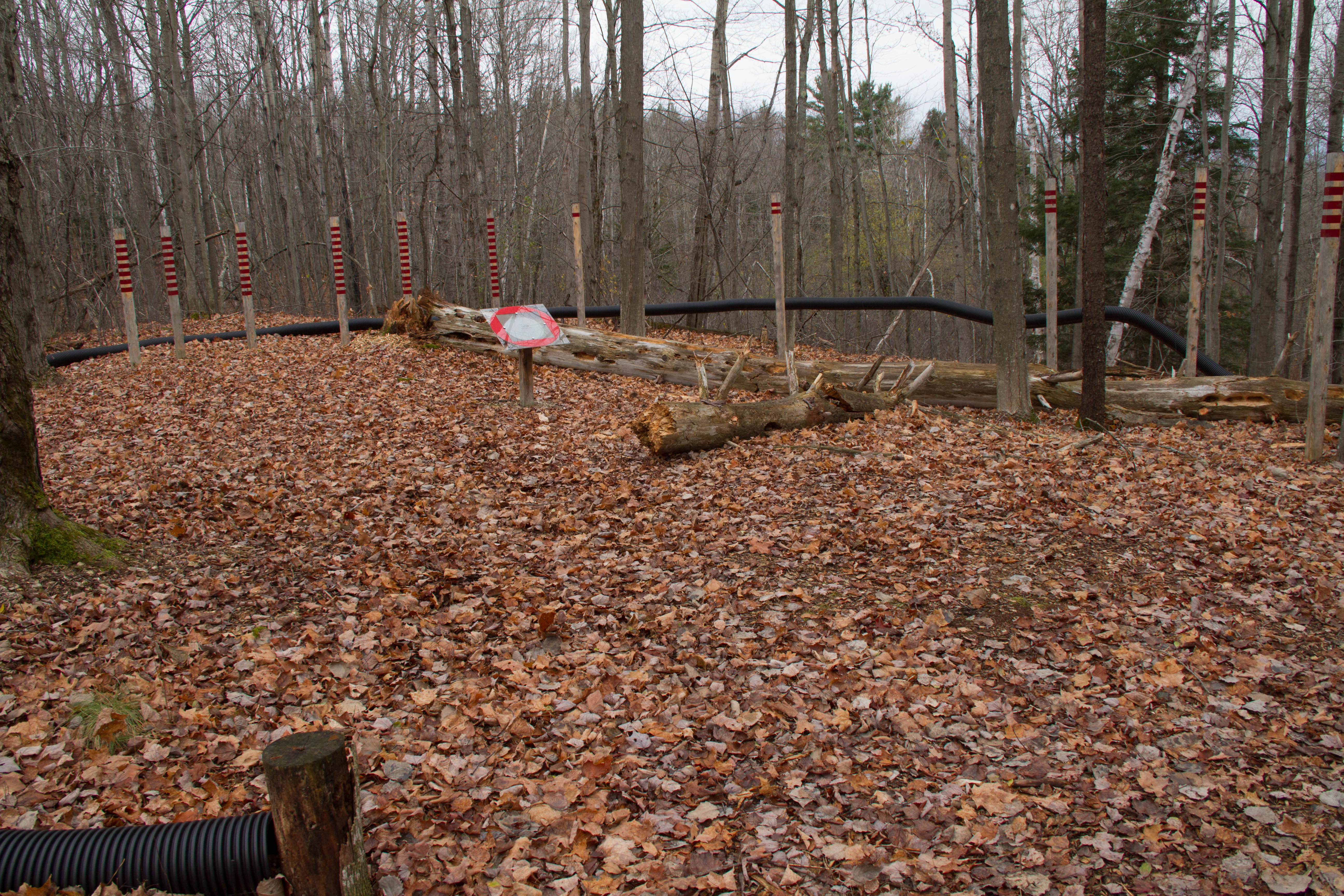
The tree fell last November, and over the winter months, I considered how to replace it. (I wrote about that here.) I thought of planting a tiny tree and waiting for it to grow. I thought of adding a metal rod, something similar to what would appear on a real sundial. But in the end, I decided to use a rock. Its solidity and immovable nature provided an ideal contrast to the ephemeral quality of a shadow that would come and go with the sun, continually on the move.
Where would I find a standing stone that fit the image I had in my mind? I called the local quarry. I searched the woods far and near. I found many possibilities but not the perfect one.
Not far from the house, a flat rock was inconveniently located in the way of a new planting bed, the North South Arrow. I barely considered it, thinking it was far too small. But removing it, we discovered it was over six feet tall. And its shape was exactly right.
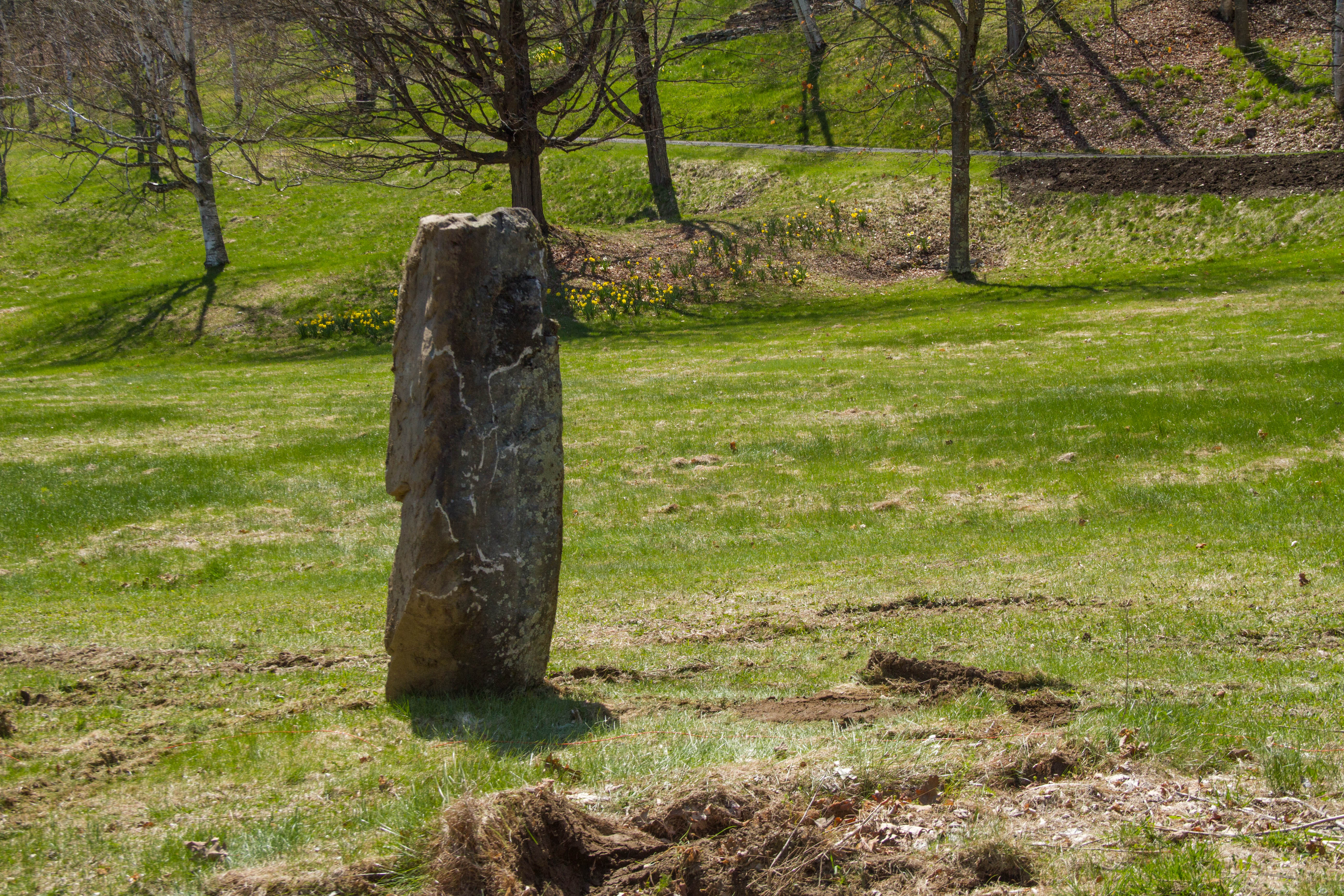
And now that menhir-type stone is standing in the centre of the Sundial — in the exact centre, where the sign that read Now/Maintenant used to be.
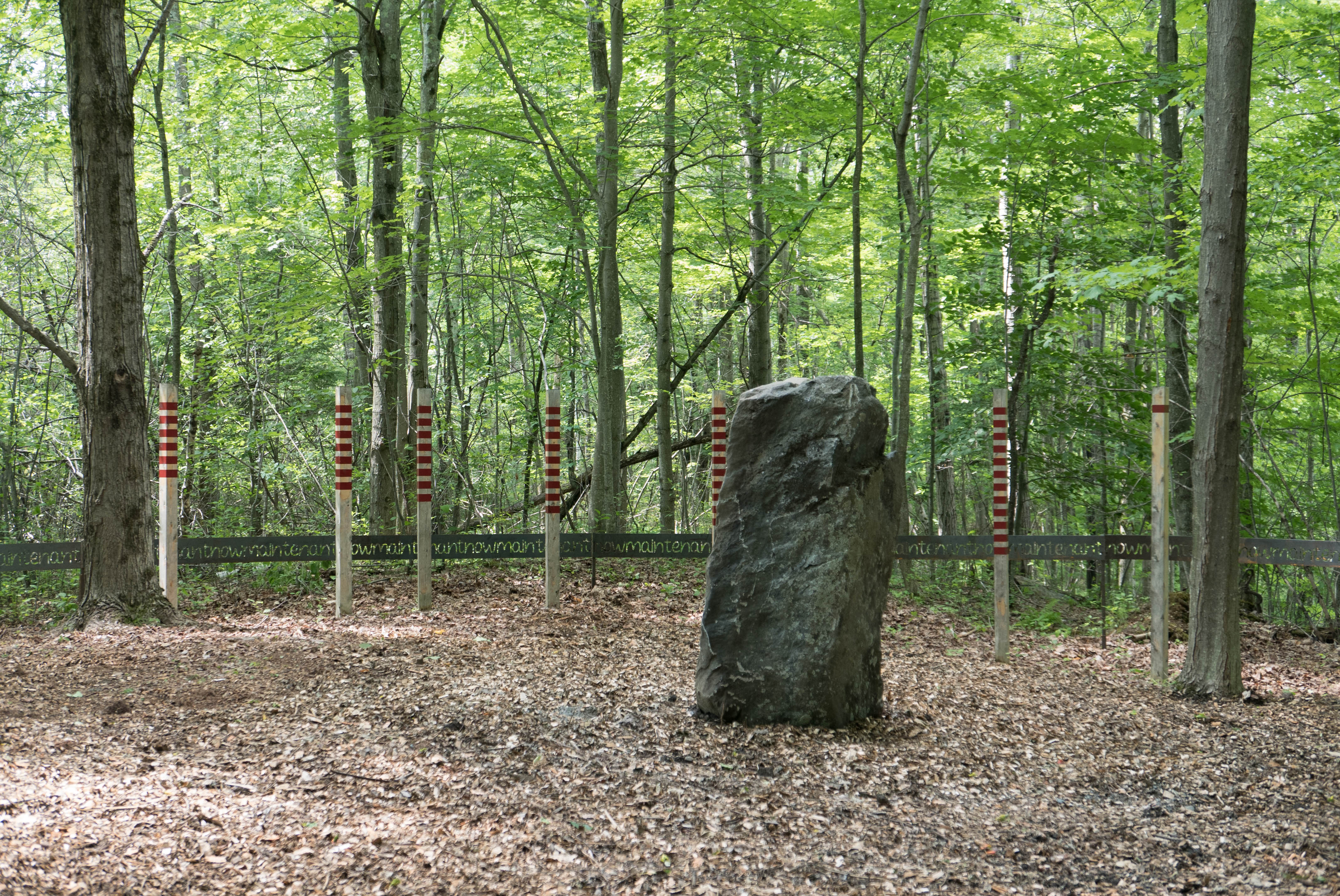
Those words were important. They offered an answer for the questions that the red signs had asked: Where are you? Are you here? Are you here now? I needed to include them somehow, some way. I also had to replace the black plastic tubing that enclosed the circle. Combining those objectives, the circle is now enclosed by a steel band, laser-cut with the two words using the same font and run-on style that I used on the signs.
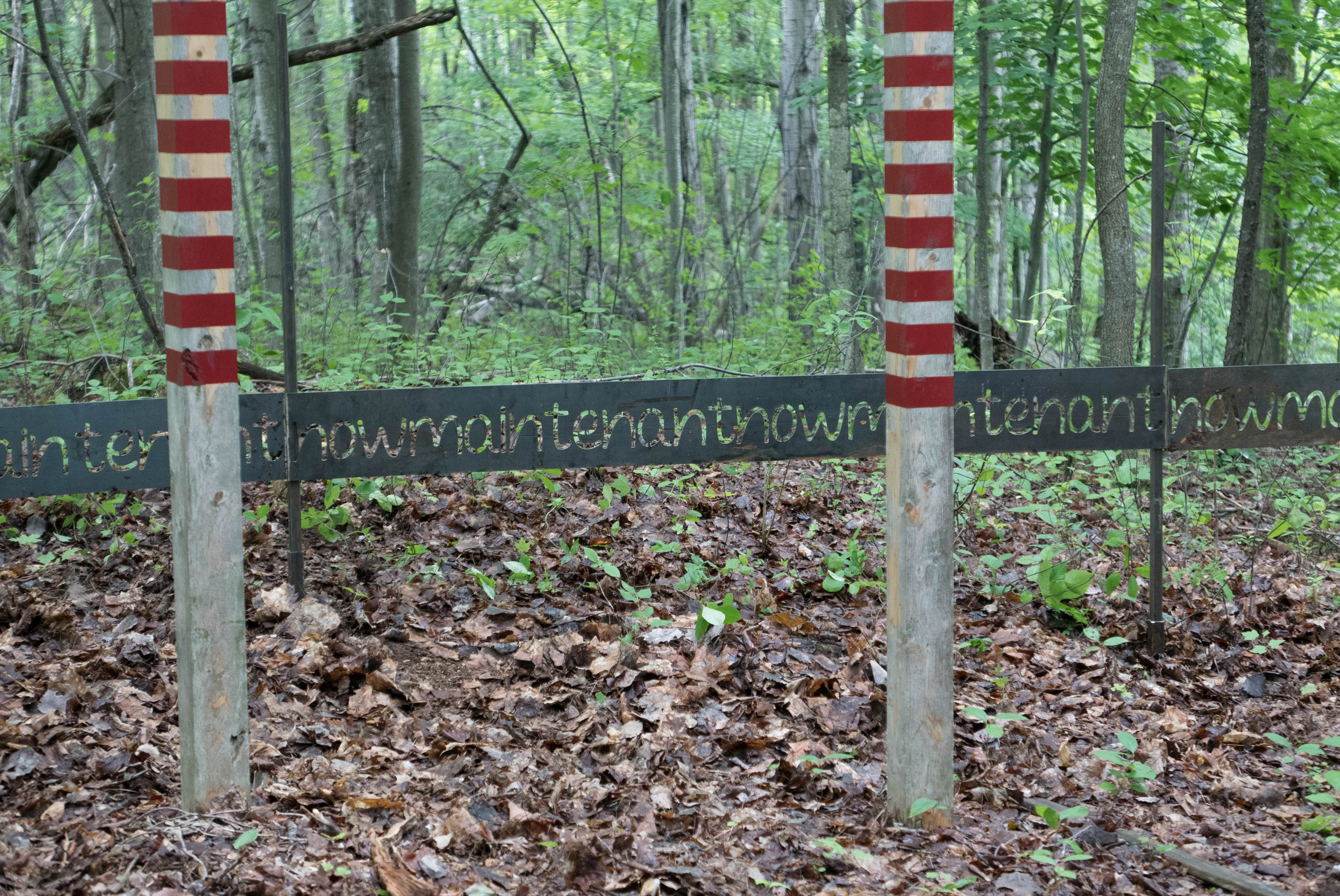
Already the steel is beginning to rust and by next year, the band will become even more integrated into the surroundings, more and more a part of the whole. I like this notion. I also like the new bench that replaced the one that was dangerously rotten. It is still the same shape, a simple pine box with words cut into the seat. Anyone sitting on it can’t help but read the words and accept what we all know to be true.
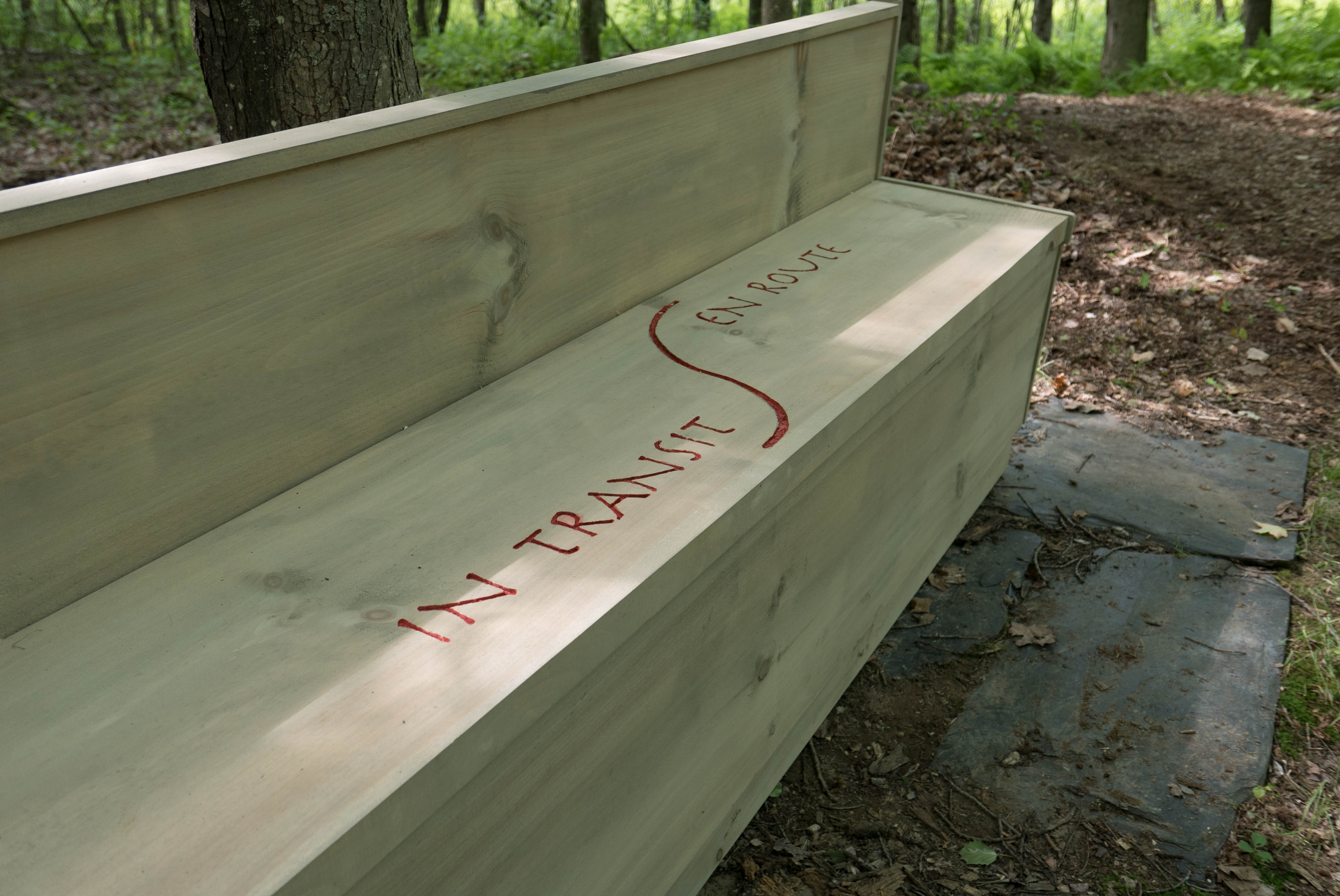






I loved reading about the process that is the art here. It is in itself an expression of the theme.
You are so right, Janet. I hadn’t thought of it that way but I agree, totally.
Beautiful, Pat — i loved seeing what you’ve done.
Thank you, Lisa. It was interesting for me to review all the changes — I’d forgotten how many small modifications there were.
This is exciting Pat, I love the change but particularly…..I love how our tours have affected your relation to your own garden as I can clearly see by this and the previous post on Bosco della Ragnaia. You are clever beyond words and I love seeing what you are doing.
I miss our tours more than you can imagine. I think how fortunate people are who still travel with you. Bosco della Ragnaia, Little Sparta, Veddw, Plaz Metaxu, even Througham Court: what a group of mentally stimulating gardens we visited together. As for being clever beyond words… not a chance! But I love the compliment.
Sounds like your sundial stone was fated to be found and used in this spot.
I think you are right!